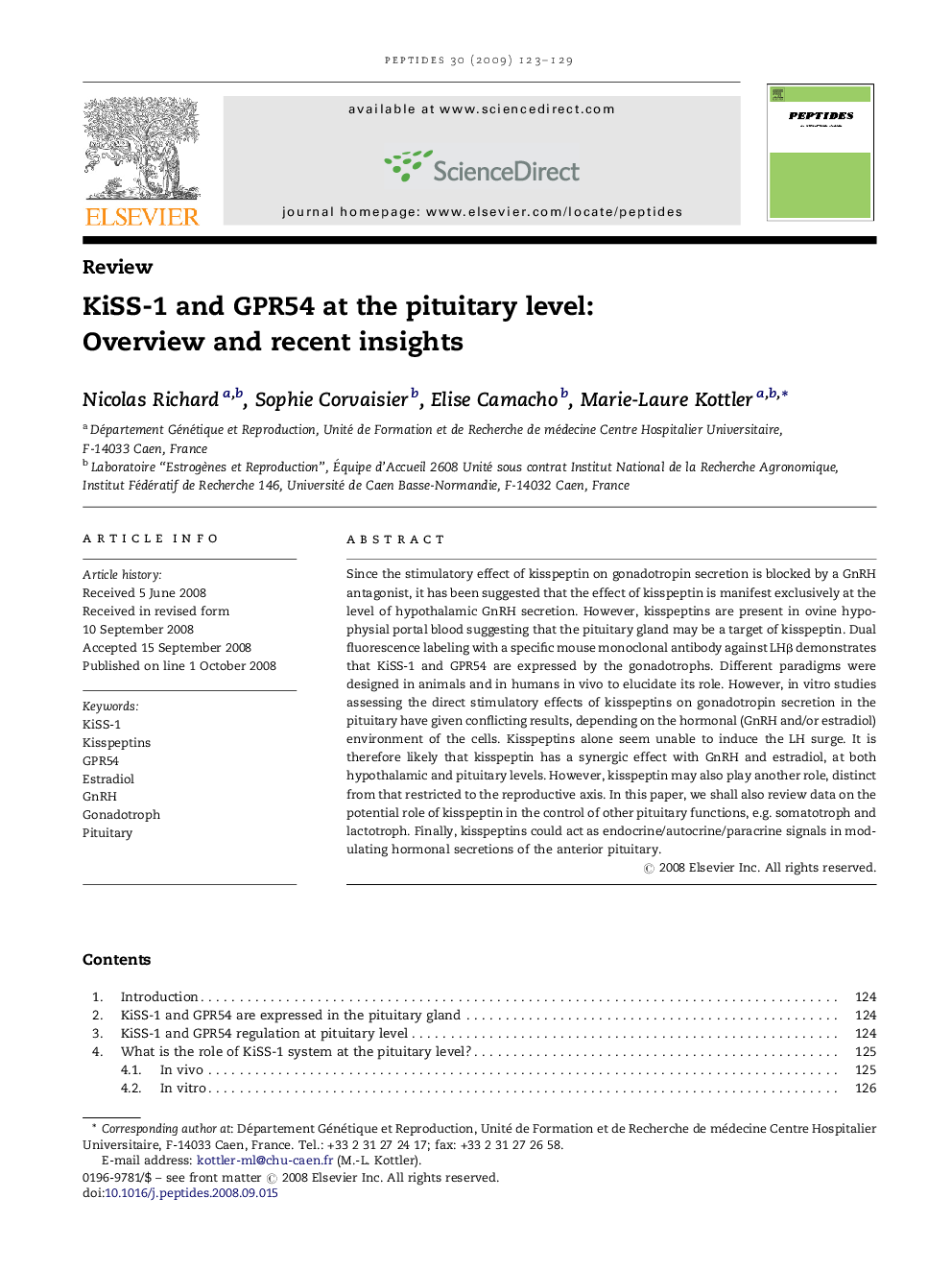| Article ID | Journal | Published Year | Pages | File Type |
|---|---|---|---|---|
| 2007930 | Peptides | 2009 | 7 Pages |
Abstract
Since the stimulatory effect of kisspeptin on gonadotropin secretion is blocked by a GnRH antagonist, it has been suggested that the effect of kisspeptin is manifest exclusively at the level of hypothalamic GnRH secretion. However, kisspeptins are present in ovine hypophysial portal blood suggesting that the pituitary gland may be a target of kisspeptin. Dual fluorescence labeling with a specific mouse monoclonal antibody against LHβ demonstrates that KiSS-1 and GPR54 are expressed by the gonadotrophs. Different paradigms were designed in animals and in humans in vivo to elucidate its role. However, in vitro studies assessing the direct stimulatory effects of kisspeptins on gonadotropin secretion in the pituitary have given conflicting results, depending on the hormonal (GnRH and/or estradiol) environment of the cells. Kisspeptins alone seem unable to induce the LH surge. It is therefore likely that kisspeptin has a synergic effect with GnRH and estradiol, at both hypothalamic and pituitary levels. However, kisspeptin may also play another role, distinct from that restricted to the reproductive axis. In this paper, we shall also review data on the potential role of kisspeptin in the control of other pituitary functions, e.g. somatotroph and lactotroph. Finally, kisspeptins could act as endocrine/autocrine/paracrine signals in modulating hormonal secretions of the anterior pituitary.
Related Topics
Life Sciences
Biochemistry, Genetics and Molecular Biology
Biochemistry
Authors
Nicolas Richard, Sophie Corvaisier, Elise Camacho, Marie-Laure Kottler,
